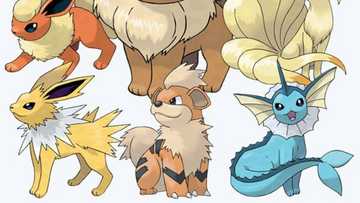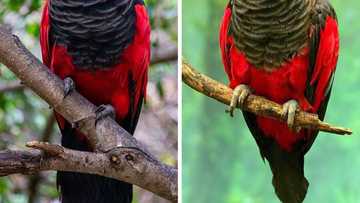TOP 12 unique facts about the impala explained (with pictures)
What animal is an impala? This is a type of medium-sized antelope that lives in the savanna and light woodlands of southern and eastern Africa. There are two sub-species of the animal, namely the common impala (smaller) and the black-faced impala (bigger and darker). They reach 70–92 centimetres at the shoulder and weigh between 40–76 kilograms. Male impalas have slender, lyre-shaped horns that are about 45–92 centimetres long.
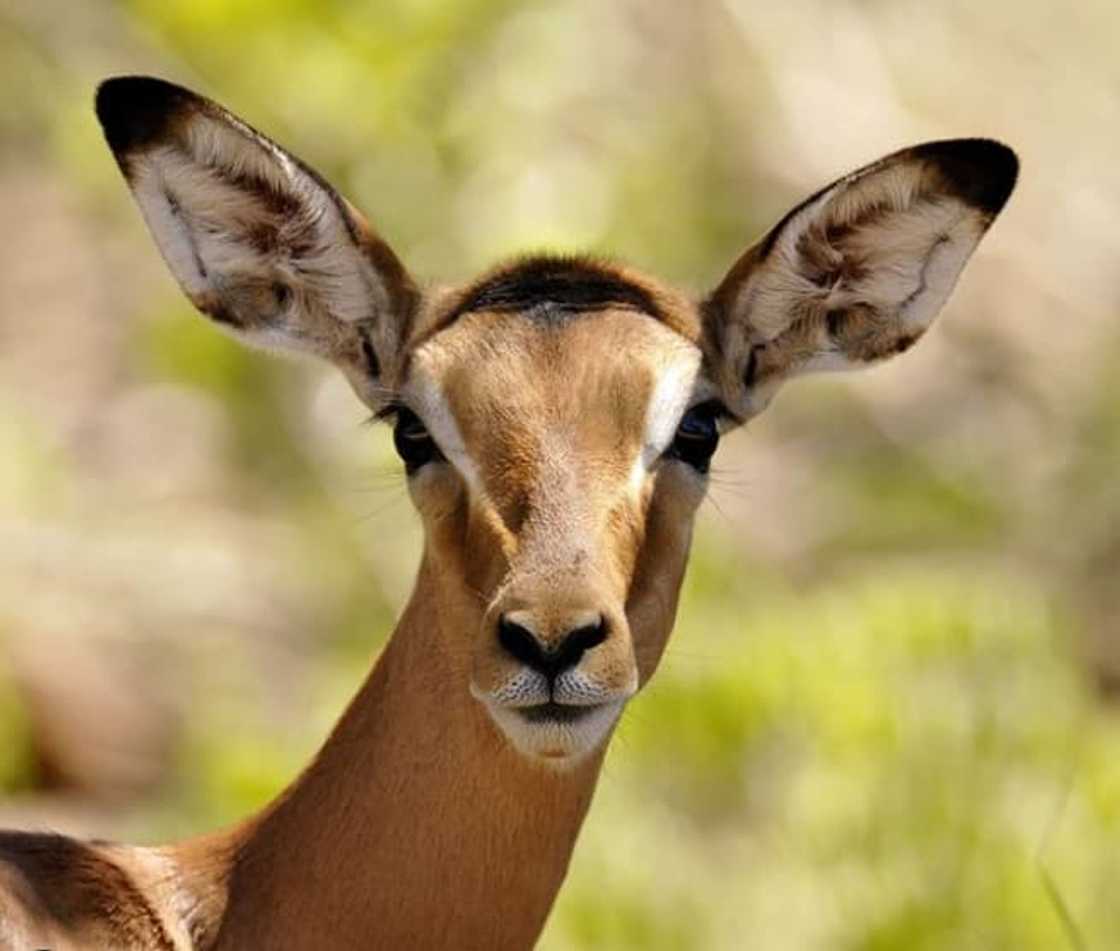
Source: Instagram
Is an impala a deer? No, it is not. From its outward appearance, the impala looks like a cross-breed of a deer and a goat. However, that is as far as the similarity goes between the deer and the impala. These animals are mainly active during the day and can be gregarious or territorial based on climate and geography.
Interesting impala facts
Impalas have inspired several things, including cars, art, and musicians, although the animal itself has not garnered as much attention. Here are some amazing facts about the impala that will blow your mind.

Read also
Hippopotamus kills suspected poacher at Kruger National Park, SA jokes: “Give the hippo a medal"
1. They have the strength to jump a distance of at least three times their height
On average, impalas have a height of about 3 feet at the shoulder. Incredibly, as National Geographic reports, they can jump up to 10 feet into the air. Additionally, they can move a distance of an astonishing 33 feet in one bound, which is astonishing considering their relatively short 4 feet bodies. All these factors combine to form an agile animal that will show even the most experienced hunter a tough time.
READ ALSO: Popular big dog breeds for families
2. They are the only surviving member of their genus
Are impalas extinct? No, they are not extinct. However, impalas belong to the genus Aepyceros of which they are the sole member. Their bigger family is Bovidae, which includes buffaloes and cows. The specific species they belong to is Aepyceros melampus, which is further broken down into the Aepyceros melampus melampus (common impala) and the Aepyceros melampus petersi (black-faced impala).
3. They are social animals
Impalas are social and will often form groups of three kinds: female, territorial, and bachelor herds. Territorial males tend to form harems of females for reproduction. To mark these territories, these males use faeces and urine. Bachelor herds normally have less than 30 members and maintain a bit of distance from one another. Young and old can interact, but middle-aged males in bachelor herds usually avoid each other except to spar. Female herds can be anywhere between 6 and 100 members and do not normally have leadership hierarchies.
4. The strongest male mates reproduce
Males challenge the strength of each other using their long spiral horns. Old male impalas mark their mating territories and lead females that they jealously protect from rivals. During the mating season, males must fight off challengers, and if unsuccessful, his territory is overtaken, and the loser male impala joins the bachelor herd.
5. The mother-calf bond is not strong
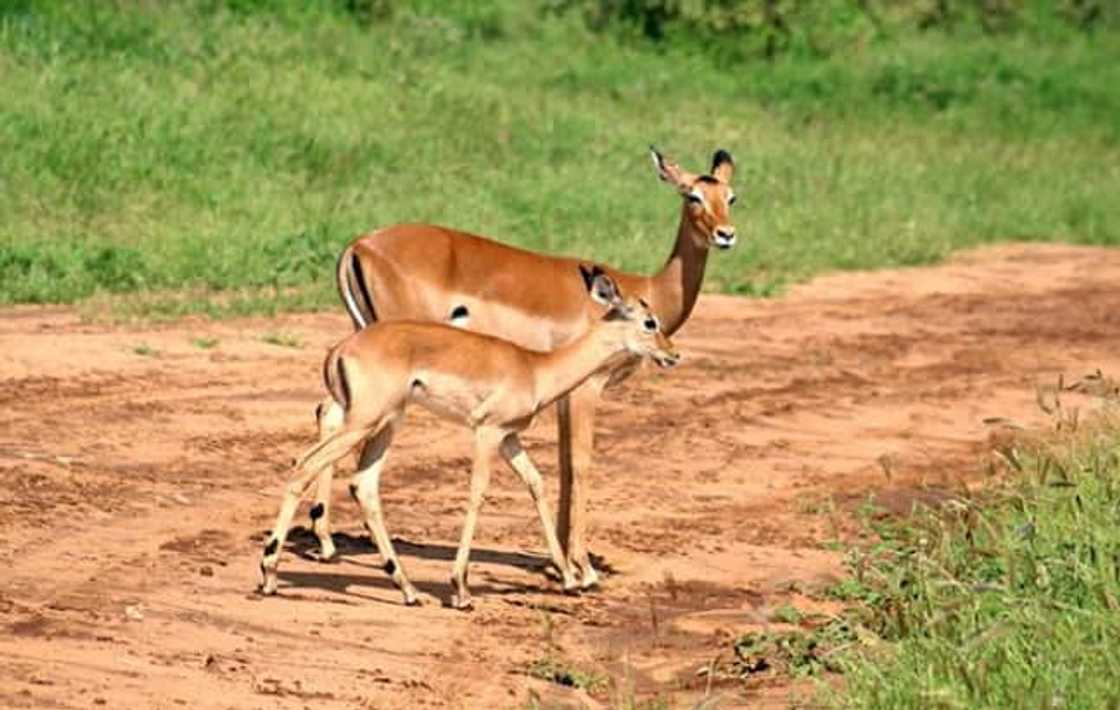
Source: Instagram
The females of most species tend to stay attached to their young ones for quite a while before the new ones are completely independent. In the case of impalas, the young ones leave their mothers soon after weaning to seek their herds. For this reason, most herds will be formed of several unrelated members.
6. Pure speed is not the most efficient evasive tactic for them
Are impalas fast? Studies show that impalas are relatively fast, but they have a higher chance of evading predators if they hop and weave with the occasional slowing down instead of a flat-out run. This is especially true once cheetahs, which are faster and stronger, are taken into account.
An alert impala barks to inform the others that there is a predator, and the entire herd takes off. By jumping, weaving, and slowing, the impala keeps the predator guessing, thus offsetting the disadvantage the impala might have in terms of strength and speed.
7. They are both browsers and grazers
The impala diet is herbivorous in nature and comprises of things like fruits, monocots, acacia pods, dicots, and forbs. Most of this food is found in places close to watering holes, which is what they prefer because succulent plants can act as a water substitute during dry periods. Browsing, as a mode of feeding, is preferred during the drier seasons because the grass is scarce compared to shrubs.
8. Females generally give birth during midday
Males are generally ready for reproduction after a year, while females need a year and a half to become mature. Once females get pregnant, they gestate for around six or seven months. Once labour pains hit, the female will isolate herself from the herd to give birth, which normally happens at midday. There is a perception that females can delay giving birth for up to a month if the conditions are harsh.
9. They give birth to a single calf
Impalas give birth to a single calf at a time. The calf is covered for a few weeks before joining the nursery group in its mother's herd. The calf suckles for 4-6 months.
10. Their meat is a delicacy
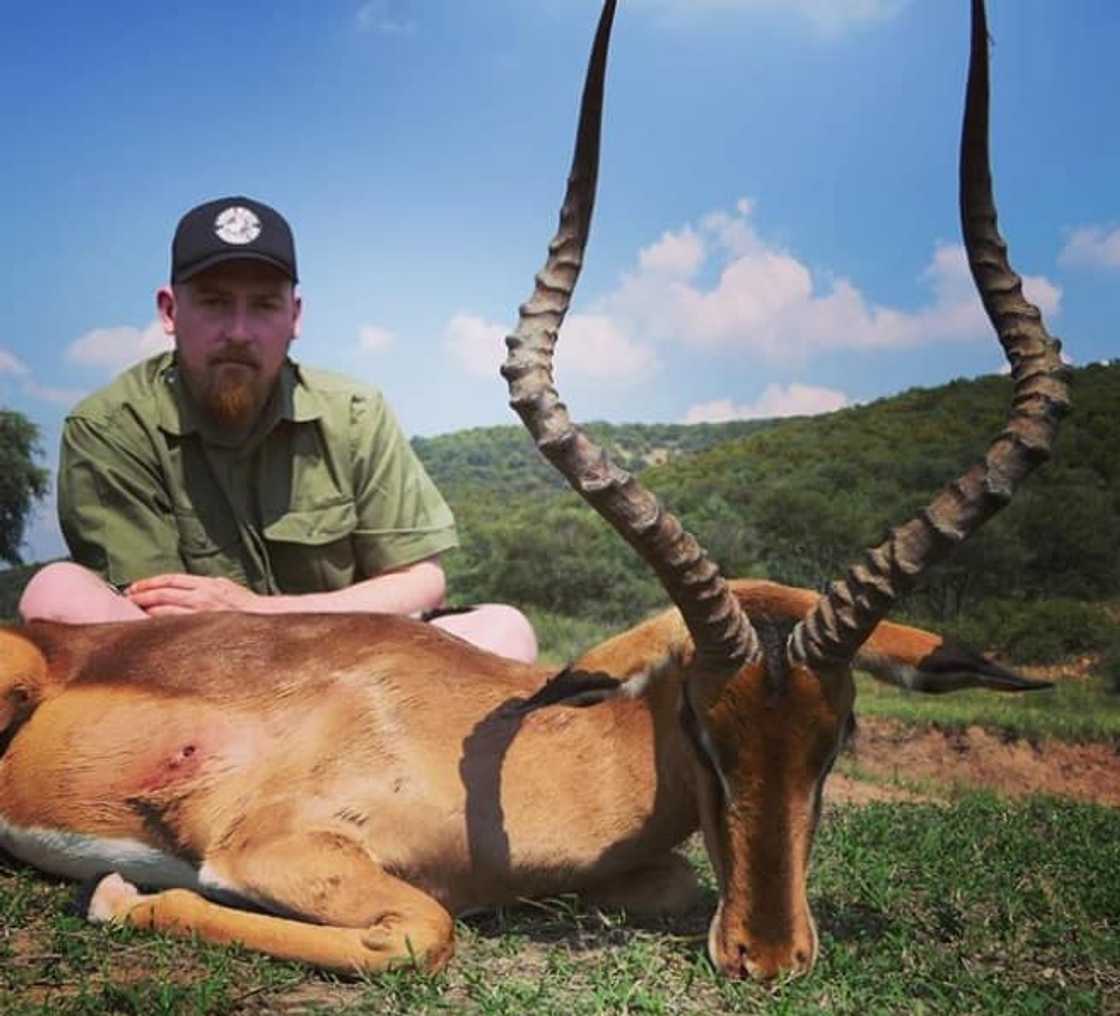
Source: Instagram
In the southern part of Africa, the impala meat is part of a delicious meal. For example, the South Africans have a form of dried and cured meat called biltong that resembles jerky. Note that the biltong can also be made out of beef, but some prefer to use meat from impalas.
11. Unique physical appearance
The back of the impala is reddish-brown, but the underbelly is white. They have light chin and snout, and white rings around the eyes. The ears, with black tips, are about 17 centimetres long. They have black streaks running all the way to the upper hind legs from the buttocks. They have a bushy 30 centimetres long tail with a solid black stripe along the midline. Black-faced impalas have a dark stripe on both sides of the nose, which run upwards to the eyes and becomes thin as it reaches the forehead.
12. They have other special features
Impala has scent glands concealed at the hindlegs by a black tuft of hair. During the mating season, sebaceous glands mostly on the forehead and spread on the torso of dominant males are most active. The same glands in females are partially developed and do not change. They have four nipples.
Impalas have a special dental organization on the front lower jaw same to the toothcomb in strepsirrhine primates.
Now, you have a solid understanding of the unique animal that is the impala. You can confidently say that you know some actual impala characteristics and impress your friends with this awesome knowledge.
READ ALSO: Top 20 extinct and endangered animals in South Africa with images
Did you know that the cheetah is among the endangered animals in SA? Briefly.co.za compiled a list of top 20 extinct and endangered animals in South Africa. Each of these animals had a picture to give the reader a clear image of how the animals look like.
Apart from the cheetah and the rhinos, the other animals in the list include oribi, the painted dog, riverine rabbit, and golden moles. Birds affected include the Blue Crane, Bald Ibis, and Cape Gannet.
Check this out: the streets of Johannesburg are crammed with abandoned kittens. But where can they go? One of the stray cats was lucky enough to be saved by a student. Watch the full story
Source: Briefly News

